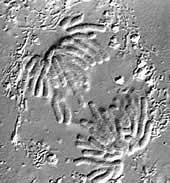Multiple controls in cell distribution
To reproduce, the cell adopts a longitudinal position and is divided into two new cells. For this to happen, you have to double the internal organelles and place the corresponding one in each new cell.
One of the most important parts of this process is the distribution of the nucleus, where genetic material is stored. Like cells, the nucleus adopts a longitudinal position that allows its division into two cores. Inside the core, the genetic material is by default duplicate and the cell only has to distribute the two copies of each chromosome.

This work is done by a group of scaffolding proteins, but to know if the distribution has been carried out correctly it is necessary to start a control system. These groups of proteins go to the ends of the nucleus and, once there, move the chromosomes. However, if the set is placed in a wrong place, an error occurs.
The ‘scaffold’ seeks the right place by keeping some strands of actin from the cell. Researchers at the University of Cambridge have discovered the control given in this step. The group of proteins ‘tells them’ in some way that has reached actin filaments. Thus, if chromosomes are not distributed correctly, the cell interrupts the process and no reproduction occurs.
Scientists do not know what communication between the group of proteins and actin consists of, but it is very important to know that a process of this type occurs to investigate how cell reproduction and cancer growth occurs.
Buletina
Bidali zure helbide elektronikoa eta jaso asteroko buletina zure sarrera-ontzian










